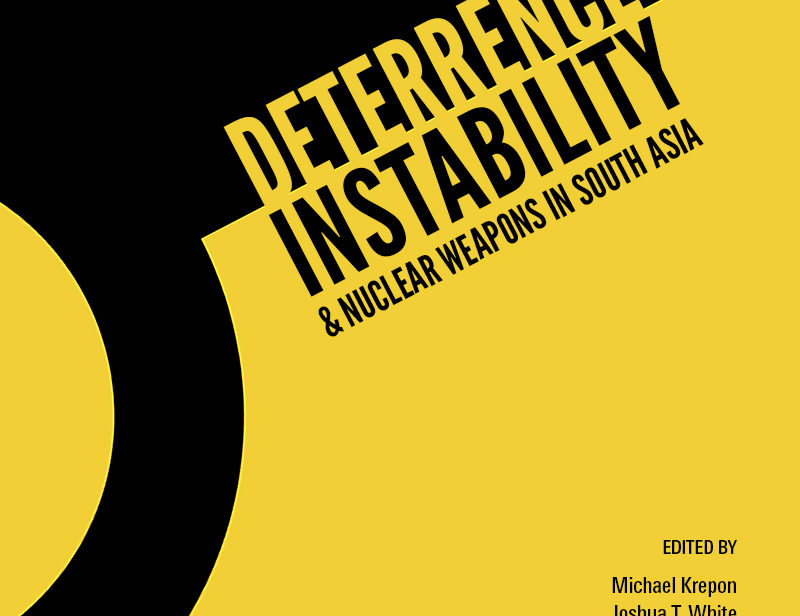
The Stimson Center has published a new collection of essays, “Deterrence Instability & Nuclear Weapons in South Asia.” This 200-page book evaluates the current state of deterrence on the subcontinent and looks over the horizon. The book’s overriding conclusion is that nuclear dangers will increase steadily and can be offset only by sustained, top-down efforts to improve diplomatic relations.
One chapter in the book, by Jeffrey McCausland, analyzes the operational difficulties of trying to incorporate tactical nuclear weapons into land warfare. He concludes that Pakistan’s embrace of nuclear weapons for use close to the forward edge of battle will multiply challenges of command and control as well as nuclear safety and security. The United States utterly failed in attempts to do this, and Pakistan is unlikely to fare any better, in his view.
India’s nuclear doctrine – and pressures to revise it – are discussed in chapters written by Manoj Joshi and Shashank Joshi. Both authors envision the possibility of India embracing more muscular nuclear capabilities to shore up its deterrence credibility. They also foresee the possibility of changes to India’s declaratory commitment to make its pledge of “massive retaliation” less stark.
Essays by Rasul Bakhsh Rais and Sarang Shidore on strategic culture and deterrence stability cover important ground. They separately conclude that strategic culture in Pakistan and India has deep roots, but is adaptable to changing domestic and external circumstances. They conclude that key elements of strategic culture – Pakistan’s “proactive” means of defense and the rise of “realist” thinking in India – are likely to further erode crisis stability as well as the concepts of strategic restraint and nuclear minimalism.
The chapter by Joshua T. White and Kyle Deming considers military technologies that are now within the reach of India – placing multiple warheads atop some ballistic missiles and deploying limited ballistic missile defenses. They advocate that New Delhi propose mutual restraint with Beijing on MIRVing, and to proceed in a nuanced way if China is not amenable to mutual restraint. They also advocate a carefully bounded Indian ballistic missile defense program.
China figures in all of these chapters. However, the analytical focus of these essays is primarily on the subcontinent. Almost all of the nuclear capabilities that India and Pakistan now possess or have flight-tested do not extend beyond the subcontinent. And this is where the potential for conflict is greatest.
My chapter questions the concept of deterrence stability between rivals. No matter how much more the nuclear arsenals of Pakistan and India grown, no matter how many new aspects of nuclear capability they acquire, deterrence stability will be a mirage – as long as they remain deeply estranged.
Deterrence stability occurs when rivals seek reconciliation, or at least when they set aside their disputes and focus on meeting domestic needs and building their economies. India and China have chosen this path. Unless India and Pakistan act in a similar way, we can expect an increase in nuclear dangers on the subcontinent in the decade ahead.
Read Stimson’s new publication, “Deterrence Instability & Nuclear Weapons in South Asia,” edited by Michael Krepon, Joshua T. White, Julia Thompson, and Shane Mason.